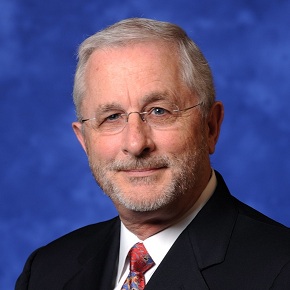Beyond the Boom
Steven Heck, President of Medsys Group
@MedSysGroup
The thriving healthcare IT industry is no longer news. But, much like the real estate market, there’s a crash coming, and soon. The American healthcare industry is normally described in three distinct sectors – providers, insurers and life sciences. While all three sectors contribute to healthcare, they operate in very different ways, with periodic blurring of relative roles and responsibilities. Life sciences include multi-national pharmaceutical and biotech corporations that focus on research and manufacturing. The healthcare insurance industry has consolidated dramatically over the last twenty-five years and now less than half a dozen corporations provide the vast majority of private insurance in the United States. The insurance sector has periodically increased patient care related interventions, but normally has just passed on ever increasing medical expenses to employers. The provider sector consists of a highly fragmented delivery system of primary, acute and post-acute care givers. This sector is mostly non-profit and historically local and/or regional in nature. All of these sectors are dramatically impacted by government policy and reimbursement rates.
In 2009, Congress passed the Affordable Care Act (ACA). This legislation created a set of “carrot” and “stick” incentives that resulted in the Healthcare Information Technology (HCIT) boom. Providers, armed with $20B in incentives, were told to deploy Electronic Medical Records (EMR’s) and use them in a very prescriptive manner. The activity level has been dramatic. Vendors, consultants and IT professionals have had the best bull market in their history. Virtually every healthcare provider across the country is automating and integrating. IT related capital spending has garnered a disproportionate share for many years. IT operating expense has increased dramatically while internal governance struggles to identify and realize tangible offsets in overall operating costs. Given strict deadlines imposed by the ACA, most of these systems are being “installed” rather than “implemented”. As a result, most providers have deferred difficult workflow and operational decisions until the “optimization phase” currently anticipated to begin in 2014-2015.
Unfortunately, there is an undercurrent to this “provider IT boom” that does not indicate a soft landing. Health related costs are increasing much faster than revenue. Elective procedures have started to decline in many areas of the country. Employers are pushing back on private insurance and employees will pay more. Federal entitlements are under tremendous pressure and our public healthcare system is fundamentally broken. We are ranked 33rd in population health and spend 100% more (per capita) than other developed countries.
Consolidation of physicians and hospitals has started. Insurance companies are becoming providers and Wal-Mart/Walgreens have opened up clinics. As total healthcare expenditures approach 20% of GDP, there is little doubt that a major correction will be required. As the financial services market contracted post-2007, we all witnessed a dramatic reversal in how and where their IT investments were made. The financial sector merely reacted to a crisis. Hopefully, the re-structuring healthcare industry will better anticipate the inevitable and minimize their post boom chaos.
We can see the train coming and have the opportunity to focus on the fundamentals. HCIT governance has been more form than function. Demand remains unfettered and resource constraints are real and being felt every day. Alignment of interests remains complex which confuse investment strategies and ongoing expense structures. Few organizations formally define the relationship between scope, service levels and cost. This lack of objective measurement makes it difficult to benchmark and/or improve specific areas of performance. Given that shared services are generally the initial and primary target for cost reduction, objectives measures will be critical to any third party evaluation. The commercial IT outsourcing vendors will be close behind the cost reduction firms. IT outsourcing can be leveraged effectively, if and only if, companies understand how to manage their IT function with metrics. The suppliers are very skilled with metrics and better with contract management.
Finally, the provider industry has the incredible opportunity to drive immense value from the technology that has recently been deployed. We have the best clinicians, medical schools and hospitals in the world. To date, the complexity and layering of government policies has resulted a dysfunctional public healthcare system. The ACA is compelling migration from increasing volume at lower rates to quality and more holistic care. We now must improve workflow, practice variation, quality and outcomes. The EMR’s, HIE’s and BI tools will allow us to accomplish these goals if we can overcome the historical roadblocks of fragmentation and unintended consequences. In 1969, we landed on the moon. By 2020, we should aspire to be ranked on the top 10 in population health and not be more than 17% of GDP expense. There’s no doubt that a train is rushing toward Healthcare IT. The question is, will healthcare IT get hit, or will it figure out a way to get on board before the crash?
MedSys Group President, Steven Heck has over 35 years of healthcare information technology experience. This includes consulting and sourcing skills in the provider, payer and life sciences segments of the healthcare industry. Heck is responsible for overseeing The Advisory Services Division at MedSys Group, that focuses on three major service areas: Best Practices to achieve the efficient use of IT resources, Practice Redesign and Optimization to dramatically improve returns from huge IT investments of the last five years; and IT Planning. Many of the country’s leading healthcare organizations have sought his leadership and advice with investment, planning and deployment strategies. Heck is a frequent speaker at Scottsdale Institute, HIMSS, CHIME and the Outsourcing Congress.

